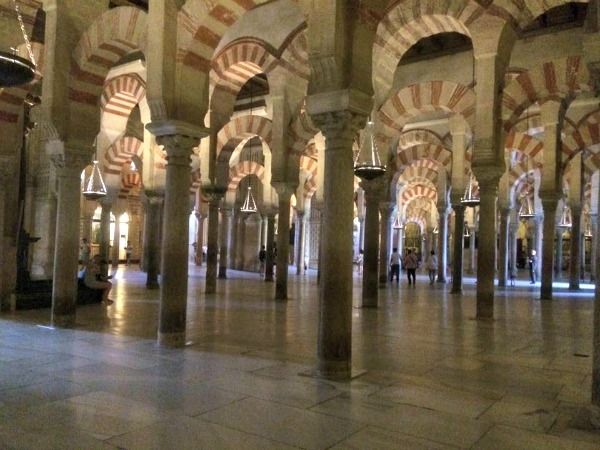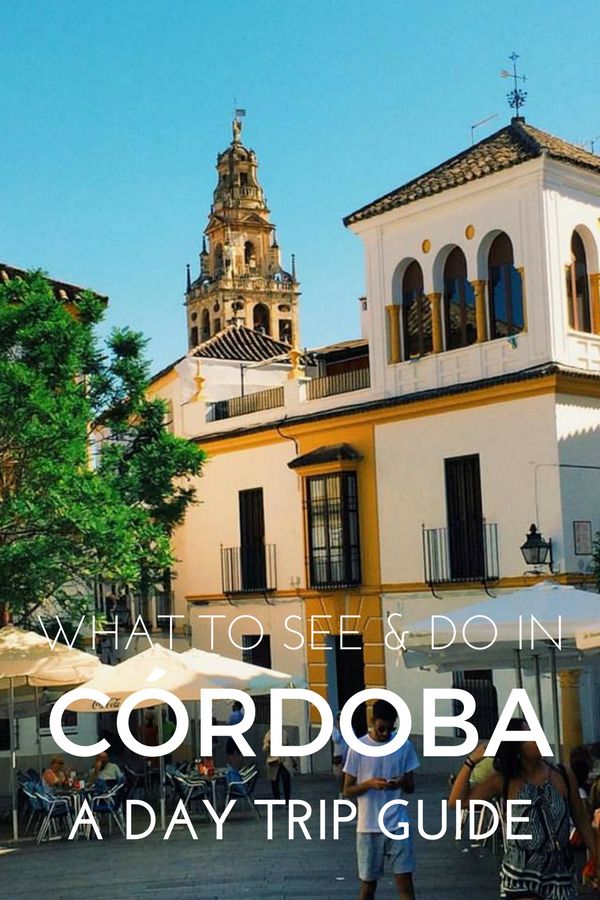Córdoba really does offer the best of both worlds: a big-city vibe with a small town Spanish feel at its heart.

So you’ve decided to visit Córdoba. Congratulations! Although not as famous as its western neighbor Seville, Córdoba is without a doubt one of the most beautiful cities in Spain, with ancient secrets hiding around every corner in its narrow cobblestone streets. At the same time, it’s full of modern excitement and flair with no shortage of things to do. In this way, Córdoba really does offer the best of both worlds: a big-city vibe with a small town Spanish feel at its heart. I’ve been lucky enough to call Córdoba home for one year now and plan on being here for the long haul. A year hasn’t been enough to discover all that this amazing city has to offer, and I can’t wait to keep discovering more. Its convenient location within Andalusia—and on the train route that connects Seville and Madrid—make it a popular stop for tourists, including several of my own friends and family members who I’ve been able to show around. Lots of tourists will only spend a day in Córdoba, usually as a means to escape the hustle and bustle of other larger cities nearby. While I personally think the city deserves more than just a day to truly discover, its compact, easily walkable historic center make it possible to visit the main sights in just 24 hours. Need some ideas? Here’s how I would spend one day in Córdoba en plan turista.
8:30 a.m.: Visit the Mezquita
I know, I know, it’s early. However, Córdoba’s most famous landmark is FREE to visit from Monday-Saturday from 8:30-9:30 a.m. This was originally intended to let worshipers enter the cathedral and pray, and some do, but individual tourists are also allowed inside during this time. The Mezquita (officially Mezquita-Catedral, or Mosque-Cathedral) has been a religious site since the original mosque was constructed during the Muslim rule of Spain in the eighth century C.E. The iconic striped arches were constructed as part of the mosque. During the Christian reconquest in the thirteenth century, the rulers of Spain were so impressed with the mosque that instead of destroying it, they simply decided to build their own cathedral within it. Due to its historic and religious significance, visitors to the Mezquita during the free morning admission period are asked to remain especially respectful. Tourists are only allowed inside individually—not in large groups—and silence is to be observed once past the ancient doors. Additionally, a more conservative dress code is enforced during this time period. I saw a girl get turned away from the free admission because her shorts were too short!
While you’re in that neck of the woods, be sure to check out some of the amazing monuments surrounding the Mezquita. The Triunfo de San Rafael towers over the nearby plaza, and the Puerta del Puente provides a stunning gateway to the Puente Romano (Roman Bridge—a bridge that was built by the ancient Romans, as you may imagine). Walk out onto the bridge towards the Calahorra Tower, but be sure to turn around and appreciate the incredible view of the Mezquita.

11 a.m.: Catch the bus to Medina Azahara
Continue your tour of Islamic Córdoba by heading to Paseo de la Victoria and boarding the bus that will take you to the outskirts of town, where the ruins of an ancient Muslim city remain. Your experience at Medina Azahara, whose name means “the shining city,” starts with a visit to a museum where artifacts from the city will tell you the story of its former inhabitants. From there, wait for the bus out in front of the museum (departures are every 15-20 minutes) that will take you up into the hills, to the remains of the city itself. The breathtaking history of the site will leave you speechless as you walk through its ruins, imagining what once was. ¡Ojo! If you’re traveling to Medina Azahara with the tour bus that departs the city center from Paseo de la Victoria, be sure to reserve your visit in advance! Tickets cannot be purchased on the bus. If you have access to a car, you can drive there yourself at your leisure.

2:30 p.m.: Lunch at Mercado Victoria
After stepping back in time at Medina Azahara, the bus back to Córdoba proper will deposit you within walking distance of one of the sleekest and most diverse dining establishments in the city. Mercado Victoria is “Andalusia’s first gourmet market,” according to its website, and includes more than two dozen food and drink stalls. Although a bit pricier than other food choices in Córdoba, Mercado Victoria is usually the first place I take or recommend to guests because of its amazing variety. From Mexican to Japanese to Argentinian fare, along with traditional Spanish and Andalusian food products, there’s something for everyone.

4 p.m.: Alcázar de los Reyes Cristianos
Head back into the historic center after lunch to check out another one of Córdoba’s most famous monuments. The Alcázar, build in the fourteenth century, holds many tales within its walls. It was the headquarters of the Spanish Inquisition for a time, as well as one of the official residences of King Ferdinand and Queen Isabella—Christopher Columbus even met with the monarchs at the Alcázar before sailing to the New World.
My personal favorite part of the massive complex is the gardens, which are full of lush greenery and beautiful fountains. If you’re not claustrophobic, the views of the gardens as well as the nearby San Basilio neighborhood are stunning when seen from the towers (just be careful on the narrow, ancient stairs!).

5:30 p.m.: Wander the Judería
The ancient streets of the old Jewish quarter are like something out of a fairy tale. Whitewashed buildings line narrow cobblestone pathways, with history hidden at every winding turn. Take some time to get lost in this charming corner of Córdoba. Highlights include the Synagogue (one of the three best-preserved from the medieval era in all of Spain) and the iconic view of the Mezquita tower from Calleja de las Flores.

7 p.m.: Visit two of the city’s best plazas and the Roman Temple
As evening falls over Córdoba, head up to Plaza de la Corredera from the Judería. This gigantic, lively square is full of great restaurants and places to grab a drink.

Once out of the plaza, head north a little ways until you reach the imposing columns of the Templo Romano. This ancient Roman temple stands right next to the current city hall building and is a great testament to some of Córdoba’s most famous ancient rulers.

Continue heading along Calle Claudio Marcelo until you reach Plaza de las Tendillas, another one of Córdoba’s most beautiful plazas. It’s home to many performances, festivals, and other special events throughout the year, including a picturesque European Christmas market during the holidays. Even on normal days, though, it’s a vibrant and sunny plaza that’s constantly bursting with life.

9 p.m. (at the earliest!): De tapeo
Partake in Spain’s most beloved culinary tradition and have some tapas for dinner! If you’re still around Plaza de las Tendillas, Lambik has a good variety of choices and the tapas are delicious. A little further out is Avenida del Aeropuerto in the Ciudad Jardín neighborhood. This lively avenue is lined with traditional Spanish tapas bars—you can’t really go wrong at any of them! The best part is that at these less-centrally located establishments, you’re more likely to get a free tapa with your drink order. That’s right—you can eat a whole meal and only pay for your drinks! After a long day of exploring, it’s understandable if you want to just head back to your hotel/AirBNB/whatever and chill out. But if you’re looking to continue the fiesta…
12 p.m.: Go out
Time to experience Spain’s famous nightlife! Don’t even think about heading to a bar before midnight—you can go, but it’ll be pretty empty before then. Clubs and discotecas don’t get active until even later. After all, Spanish culture is famous for its late night party lifestyle! Thank you for reading and I hope you have a fantastic time visiting my adopted hometown of Córdoba! Be on the lookout for guides to eating in Córdoba and going out in Córdoba, which I’ll hopefully post soon!

